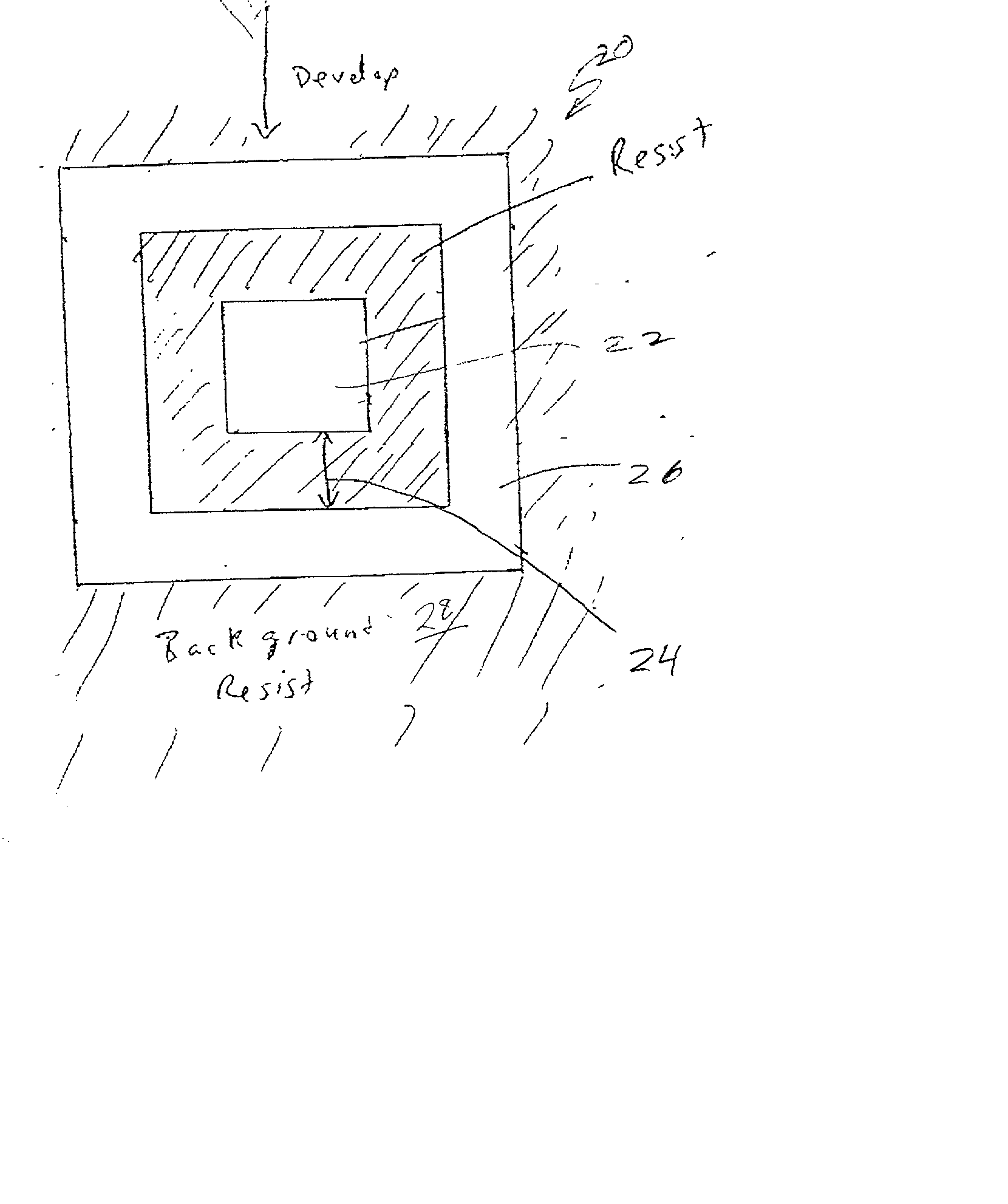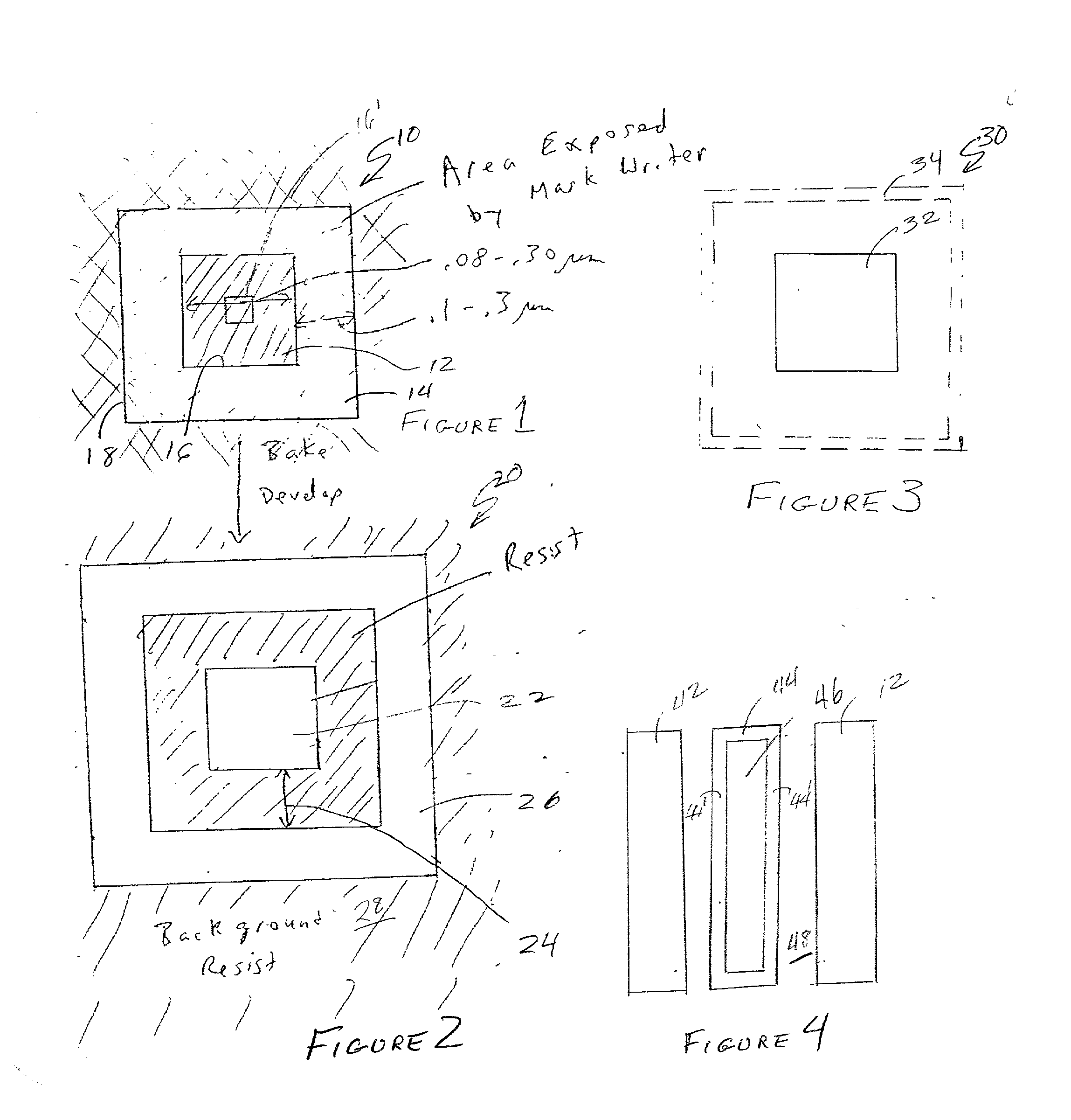Assist features for contact hole mask patterns
a technology of mask pattern and support feature, which is applied in the direction of photomechanical equipment, photo-taking process, instruments, etc., can solve the problems of limited success, limited integration density and minimum feature size that can be achieved, and limited resolution enhancement techniques
- Summary
- Abstract
- Description
- Claims
- Application Information
AI Technical Summary
Benefits of technology
Problems solved by technology
Method used
Image
Examples
Embodiment Construction
[0023] Referring now to the drawings, and more particularly to FIG. 1, there is shown, in plan view, an exemplary pattern 10 for exposure of a resist on a mask substrate for lithographic production of a contact hole with a further exposure of a resist layer using the mask. While a square shaped feature is somewhat preferred and thus illustrated in FIG. 1 for clarity and simplicity of production using available mask writing tools, the particular shape is not important to the successful practice of the invention in accordance with its basic principles.
[0024] It should be understood that the pattern 10 of FIG. 1 is intended for exposure of a hybrid resist such as that disclosed in detail in U. S. Pat. 6,114,082 to Hakey et al. assigned to the assignee of the present invention and hereby fully incorporated by reference. In essence, a hybrid resist, as disclosed therein, includes both positive and negative resist materials providing positive and negative tone responses, respectively. By ...
PUM
 Login to View More
Login to View More Abstract
Description
Claims
Application Information
 Login to View More
Login to View More - R&D
- Intellectual Property
- Life Sciences
- Materials
- Tech Scout
- Unparalleled Data Quality
- Higher Quality Content
- 60% Fewer Hallucinations
Browse by: Latest US Patents, China's latest patents, Technical Efficacy Thesaurus, Application Domain, Technology Topic, Popular Technical Reports.
© 2025 PatSnap. All rights reserved.Legal|Privacy policy|Modern Slavery Act Transparency Statement|Sitemap|About US| Contact US: help@patsnap.com


